Key takeaways:
- Creating organized prayer lists enhances intentionality and clarity in communication with God, allowing deeper emotional engagement with each prayer.
- Categories for prayer requests, such as health and community needs, help streamline prayers and foster compassion towards others.
- Personalizing prayer lists with specific details and scripture fosters a deeper connection and enhances empathy for those being prayed for.
- Sharing prayer lists with others cultivates community support and strengthens relationships through collective prayer experiences.
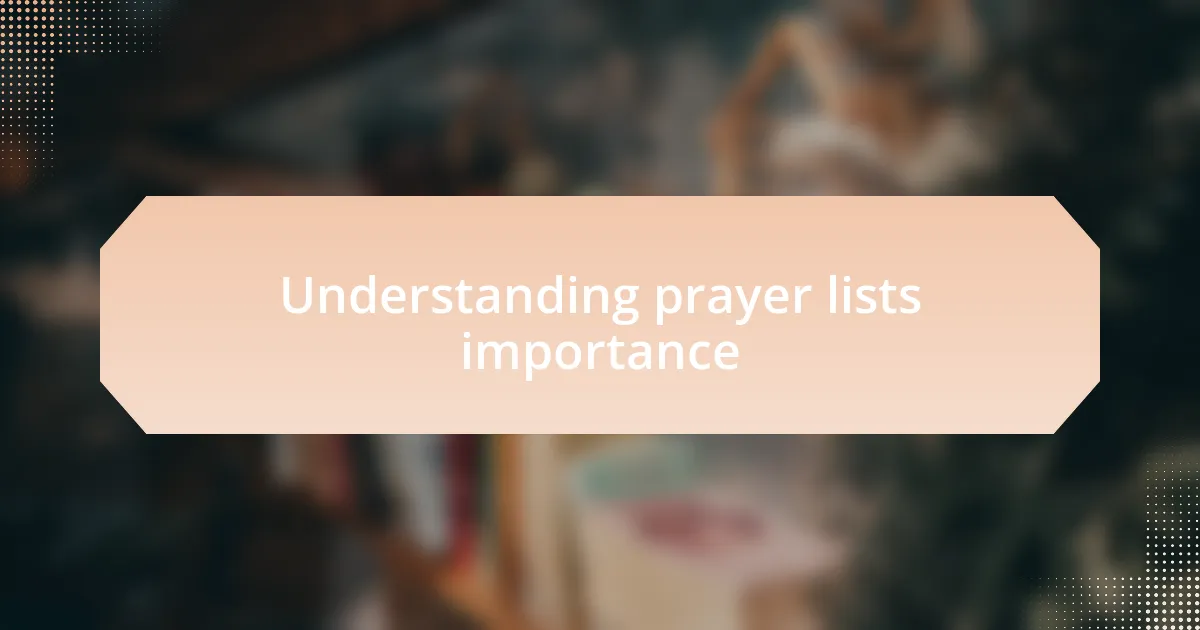
Understanding prayer lists importance
Creating prayer lists holds a significant place in my spiritual journey. I’ve often felt that focusing my prayers through a list helps me become more intentional, reflecting genuinely on individuals and situations that need divine intervention. What if you gave your thoughts a structured space? I believe that’s where prayer lists shine, creating connections to our most important desires and concerns.
In my experience, writing down prayers has transformed my prayer life. For instance, during a particularly challenging time, I started jotting down my worries on a prayer list, and those pages became my refuge. Each request represented a piece of my heart, allowing me to see how God was moving over time. Isn’t it comforting to revisit those prayers and witness how much growth and change have taken place?
Moreover, I find prayer lists help cultivate gratitude. As I review my list, I allocate time to acknowledge answers to prayers, big or small, and this fosters a deeper appreciation for life’s everyday miracles. Have you ever stopped to realize how much you’ve received in prayer? That reflection not only fills my spirit with hope but also encourages me to keep praying, knowing that every word matters.
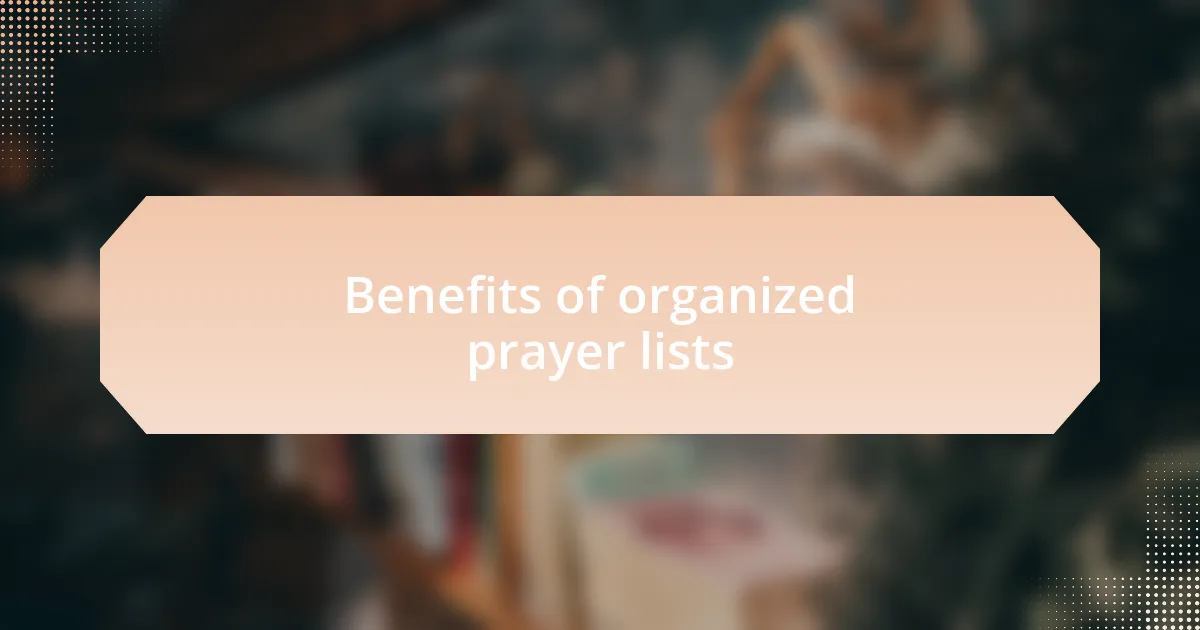
Benefits of organized prayer lists
Organized prayer lists provide clarity in our communication with God. I remember a time when I felt overwhelmed by the sheer number of issues I wanted to pray for. By categorizing these requests—family, friends, personal struggles—I noticed how much easier it was to focus and pour my heart into each section. Isn’t it fascinating how organization can transform chaos into peace?
Moreover, I’ve discovered that keeping a prayer list encourages consistency. There were moments when I’d skip praying simply because I didn’t know where to start. Having that list in front of me served as a gentle reminder, nudging me to engage in conversation with God daily. How could something so simple become such a beacon in my spiritual practice?
Finally, prayer lists nurture a sense of community. When I include requests for others, it often sparks a sense of connection that feels profound. I’ve reached out to friends, sharing my list and their own requests, and in turn, felt uplifted by the shared experience of prayer. Have you ever thought about how your prayers can ripple out, impacting others in unseen ways?
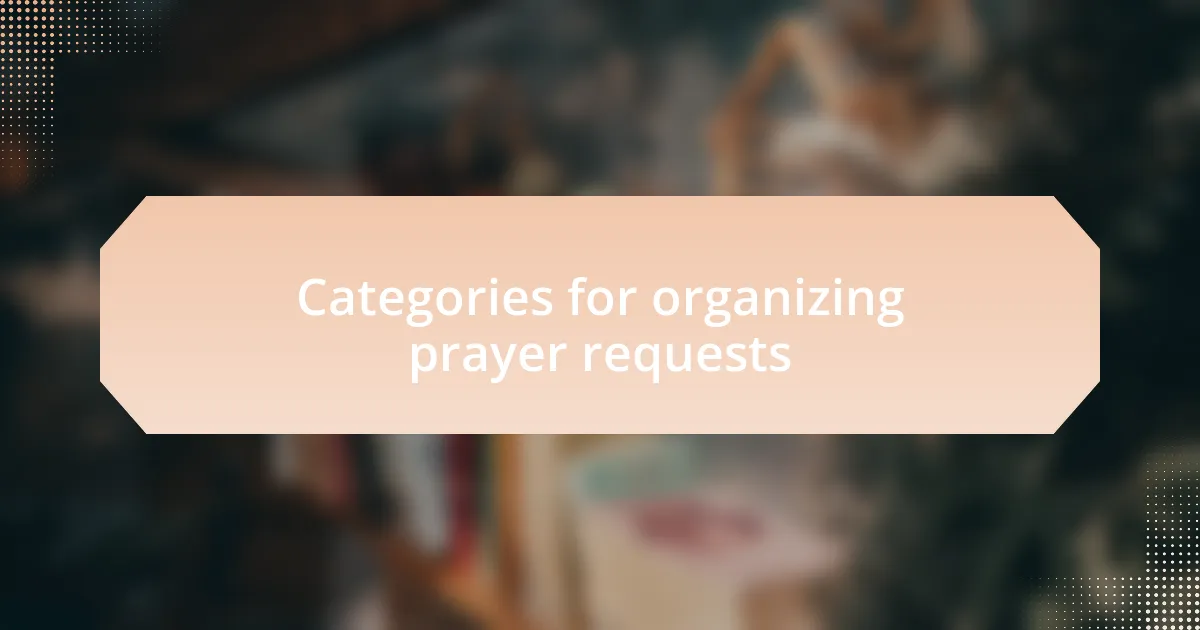
Categories for organizing prayer requests
When organizing prayer requests, I find it helpful to categorize them into specific groups such as health, guidance, and gratitude. For example, when I was praying for a friend’s recovery from surgery, it felt grounding to dedicate a distinct section solely to health needs. This focused approach not only streamlined my prayers but allowed me to pour deeper emotional energy into each request.
I also incorporate a category for personal growth and spiritual challenges. Reflecting on my journey, I remember how confronting my own struggles made me realize the importance of continually praying for personal development. Have you ever thought about how acknowledging our shortcomings can lead to profound growth? When I included my own spiritual battles in my prayer list, it transformed the experience from mere requests to a supportive dialogue with God.
Another useful category is community needs. I regularly jot down local issues or broader societal concerns that tug at my heart. Recently, I started including prayers for those affected by natural disasters, and I noticed how that expanded my empathy. Isn’t it amazing how focusing on the needs of others encourages us to step outside ourselves, fostering a sense of compassion? This shift not only enriches my faith but reminds me of the interconnectedness we share in our spiritual journeys.
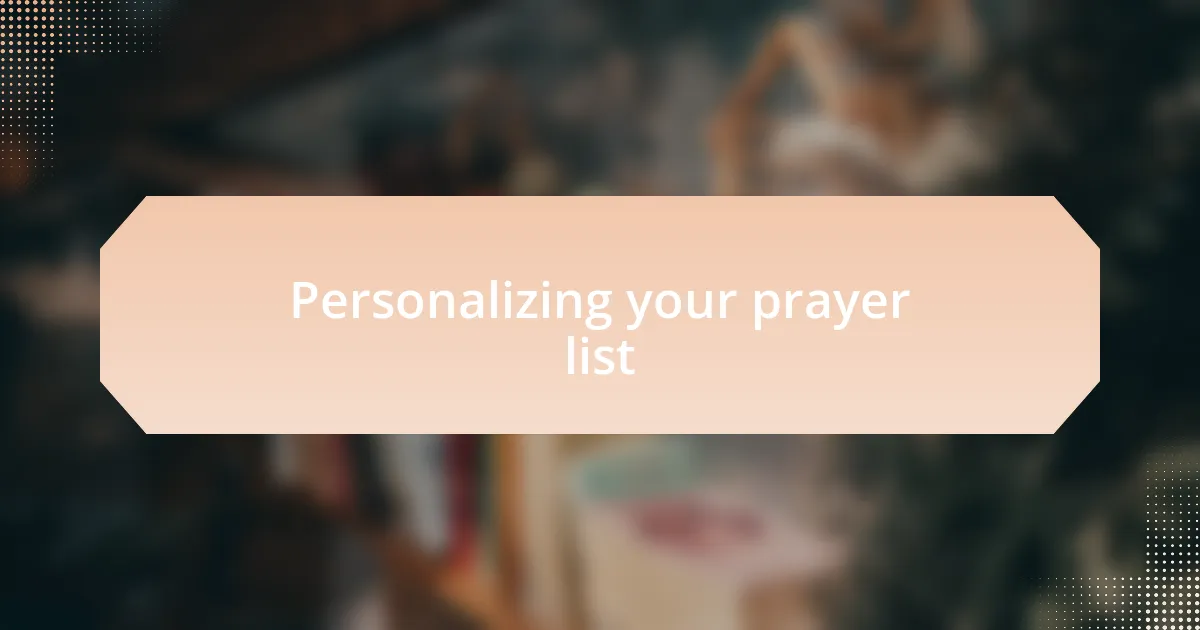
Personalizing your prayer list
To truly personalize your prayer list, I recommend adding specific details about each person or situation you’re praying for. For example, when I include a prayer for a friend going through a tough time at work, I write down what challenges they are facing and what qualities they can draw upon to overcome them. This not only makes the prayer more meaningful but also helps me to stay connected to their journey. Have you ever considered how naming particular struggles in your prayers can enhance your empathy?
Moreover, I enjoy incorporating favorite verses or quotes that resonate with the individual’s situation into my prayer list. I once added a line from a psalm to a prayer about a loved one facing uncertainty—it felt like a tangible reminder of hope. Isn’t it powerful how scripture can deepen our intentions and uplift our spirits? This small addition can transform a simple request into a profound moment of reflection and connection.
Finally, I’ve found that periodically revisiting and updating my prayer list makes it feel alive and relevant. When I unexpectedly hear good news about someone I’ve been praying for, I celebrate that moment instead of treating it as just another item ticked off my list. How often do we pause to reflect on the prayers that have been answered? This ongoing dialogue with myself and with God turns my prayer practice into a meaningful, evolving journey that nurtures my faith daily.
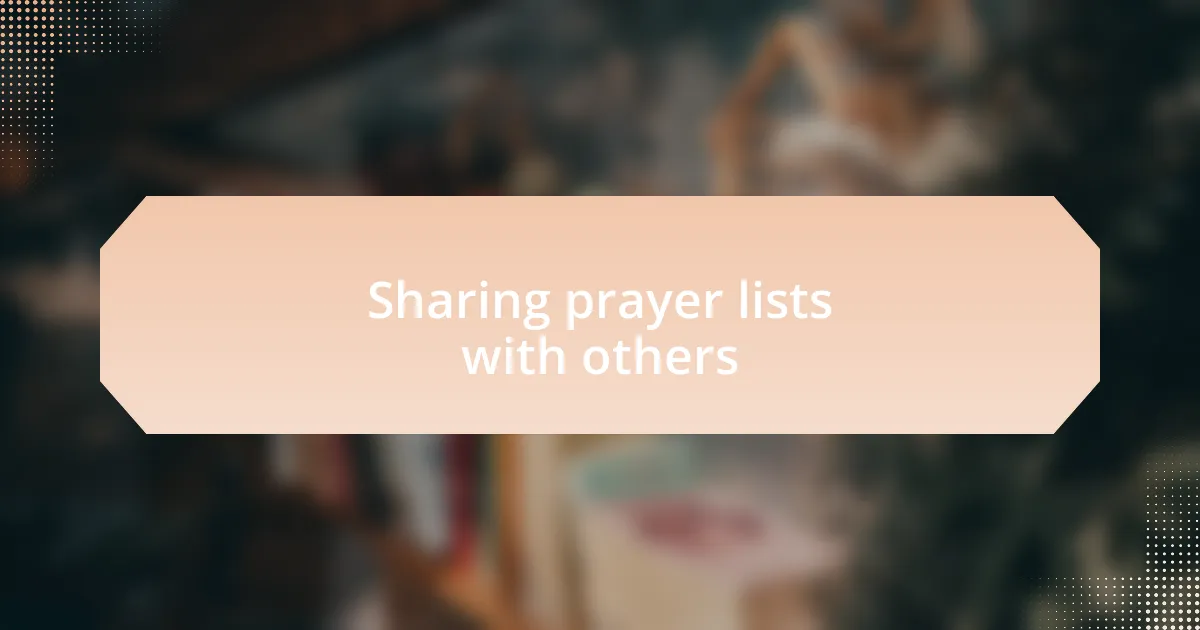
Sharing prayer lists with others
Sharing prayer lists with others can be a beautiful way to foster community and support within our faith journeys. I’ve experienced this firsthand when I invited friends to join me in prayer for a mutual acquaintance facing a significant health challenge. The act of sharing not only lightened my own emotional load but also created a sense of unity among us, strengthening our connections. Have you ever thought about how collective prayers can multiply our intentions?
When I share my prayer list, I encourage those around me to add their own requests. One time, a friend included a prayer for her struggling family member, which prompted an enlightening discussion about how our struggles can touch multiple lives. This exchange of heartfelt requests creates a tapestry of compassion that extends far beyond our individual experiences. Isn’t it amazing how sharing our burdens can lead to deeper relationships?
I also find that sharing my prayer list over social media brings unexpected blessings. Once, I posted a request for prayers regarding personal difficulties, and I received messages filled with encouragement and support from individuals I hadn’t spoken to in years. This reminded me that our vulnerability can invite others in, creating an atmosphere of openness and healing. Have you ever considered how sharing your prayer requests could lead to a network of support you never knew existed?